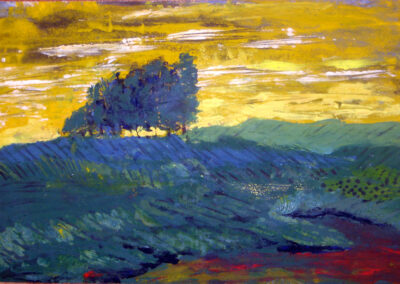Korneli Sanadze
Works
Info

From the 1930s onwards, the ideology of Social Realism became the necessary and only condition of Soviet art, which placed unification of style and artistic movements on the agenda. It also emphasized the need for certain legislative regulations, the rejection and even slightest reversal of which posed a deadly threat to any participant in the process. In this difficult epoch it became dangerous for an artist to express his/her free creative position and therefore, in many cases his colleagues chose to work on propagandistic, permitted, or neutral themes in order to conform to the socialist style. Nevertheless, while solving artistic tasks they turned to certain experiments and the experiences of contemporary movements.
In order not to violate the regulations of Social Realism, Korneli Sanadze decided to choose classical art as his inspiration. He created pastoral landscapes and poetic compositions, which he masterly combined with figurative propagandistic paintings. In this way he managed to draw on the extensive experience of Impressionism, Fauvism, Expressionism, Modernism, and Romanticism in terms of both method and means. Accordingly, his figurative scenes often resemble the mythological compositions of classical art, and the numerous landscapes that involve fixing the effects of time, weather and lighting, focus in fact on Impressionist or Fauvist messages, which apparently did not contradict with the common policies of the totalitarian regime, while at the same time created progressive cultural movements within Soviet art. Sanadze’s works are filled with lyricism and color, dominated by the nostalgic mood of the decadent era.
Baia Tsikoridze





















